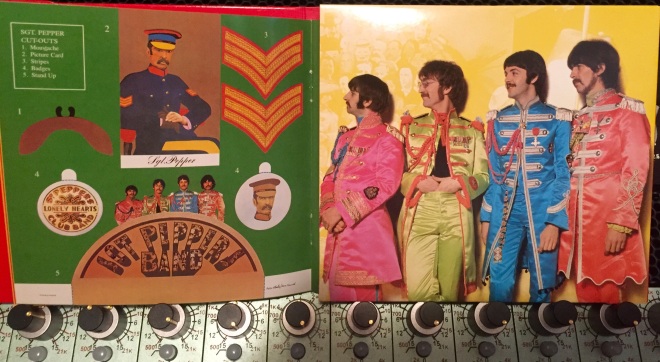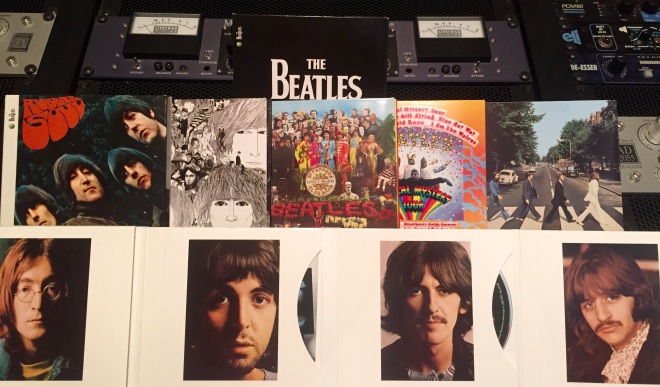
Many years ago my friend David Zeman, keyboardist for the Rembrandts, AJ Croce and Parliament, asked for my help in upgrading his basic vanilla Pro Tools system to a premium HD4 Accel system. I had already done several HD upgrades to my rig, so I was intimately familiar with many of the obstacles he would face in his quest for the Holy Grail of digital audio workstation power. As I began to help him, I realized that the process would take much more time than I was able to provide.
Because there were so many variables to his equation, I decided to refer David to a professional. Pro audio guru Chris Bolitho and I had spoken several times, and he impressed me as someone who “gets it.” Chris saved David and me many hours of research, and quickly and painlessly got Dave into his new rig. We were so impressed with Chris that I became a source for referrals for him for about 10 years, even though we had not yet met face-to-face. Every report about him was glowing. 100% satisfaction rating!
Fast forward to 2014. Thanks to my status in the record business, I had become accustomed to purchasing pro audio equipment directly from manufacturers or their reps. My ability to purchase at cost was one of the perks of having healthy nurturing relationships with the folks who design the recording equipment that I use. This is quite a delicate thing because manufacturers absolutely need to protect their retailers, but it makes sense to have a few direct relationships with celebrities and industry leaders. Indiscretions and loose lips can topple empires, so there’s an understanding that artist accommodation prices remain discreet, if not confidential.
On the rare occasion that I needed to buy something from a retailer, I would go to the “Pro” division of a specific large corporate chain with whom I had a relationship, who would sell to me at dead cost. I had no incentive to look any further until my superhero point person decided to change careers and leave the company. He set me up with The New Guy, who was pretty cool, but was unable to accommodate my needs in a timely manner. Things can happen pretty quickly in my world, so I surround myself with a team of experts who are nimble and attentive. New Guy always had a 72-96 hour delay, so he missed the boat several times.
I was in the market for a Sterling Modular “Plan B” mastering console, so I called The New Guy again to find out if he could help me. The New Guy quoted me a price that was 20% less than I knew he was permitted. Some manufacturers protect their dealers by prohibiting discounts beyond a certain percentage, a practice that ensures the product does not become devalued. Violation of the minimum price covenant often results in having the dealership revoked. There was literally no profit on this particular deal, only marketshare for the company. Good for me, but not good for the retailer. Something didn’t feel right. It felt unenlightened, almost like turning a blind eye to global climate change, a scenario in which instant gratification can result in long-term holistic problems.
My instinct told me to call Chris Bolitho. Why? He gets it. He’ll find a win-win. Always does. I’ll get my console, and Chris will ensure that the world continues to have access to a brick and mortar pro audio store that provides actual services performed by real human beings. High quality recordings will continue to exist. The future looks bright!
So… I phoned Chris. He quoted me a fair price that I knew was indeed a win-win. Then I asked if he could explore a deal that would involve trading some equipment that I no longer used. He examined my list, then advised me how to get the most bang for the buck. I gave him the green light. Zero dollars cash out of pocket, console acquired, orphaned gear off to a new home. Everybody wins, as it should be.
There’s a common misconception about artist deals. You might think that we get the least expensive accommodation price directly from the manufacturer, but that’s not always true. Further, there’s a lot of value added by running an artist deal through a credible reseller like Vintage King. Due to its purchasing power as a result of a large economy of scale, VK may get a better price from the manufacturer than the artist can. Remember that the manufacturer wants to protect the retailer, plus it wants distinguished professionals to have the equipment at a price that makes us feel special and motivated to spend. By running the deal through VK, it can fulfill both needs by both subsidizing the retailer and reducing the accommodation price.
That, however, is not the best part for an artist in my position. Much more important than a sexy price is Vintage King’s marketing clout. VK has transcended the traditional role of the retailer, and has evolved into a partner with artists like me. VK’s marketing mavens have contributed to my continuing visibility in the press. I cannot even begin to describe how important this is for a behind-the-scenes craftsman like me–I may be doing my best artistic work ever, but if the outside world were unaware of my talents and relevance, I would be unable to thrive in such a competitive industry that is reeling from an accelerating race to the bottom.
You may be wondering where is the value of Vintage King for you if you’re not a celebrity. The most obvious answer is that the showroom is well endowed with all the good stuff that the hit makers are using on their recordings. You can roll up your sleeves and get hands-on with a mountain of gear, you can do side-by-side listening comparisons, and you can get valuable consultation from the VK’s sales team. Chris and his colleagues work with many, if not most, of the top pros in the recording industry. They know who is using what, and they aggregate that information for their customers.
And if you’re selling or trading used recording equipment? Unless you want to spend the precious hours of your day hoping for a few more bucks by industriously vetting prospective buyers on eBay or Craigslist, you’re in the right place. I personally have no interest in dealing with that headache; Vintage King, however, is in business to do exactly that. In my experience, Vintage King pays a modestly higher wholesale price than other retailers do. Then they test and refurbish your old gear before selling it, which they do with both a warranty and a return policy. Good karma.
Fast forward to 2015… I am honored to call Chris one of my friends. Yes, we’ve dined together, we’ve done several special events together, and we’ve had our share of deep conversations about life, love and the pursuit of happiness. And cats! We send each other photos of our cats creating music and destroying Christmas tree ornaments.
Before signing off and passing the baton to Chris for his thoughts, I must say that he does much more than acquire equipment for my studio. He’s a super smart team-building guy who knows that a deal is only a good deal if it’s good for everyone. He looks at the big picture, and helps define a strategic game plan for upgrades and purchases, based on my needs, not his commission. He even identified a couple untapped revenue streams in my business, both of which I’m now nurturing!
Plus, let’s not forget to mention that Chris’ sexy British accent makes him sound impossibly interesting at all times, even when he’s merely giving directions to Vintage King’s impressive Los Angeles showroom.
Without further ado, here’s my brief interview with Chris Bolitho.
MJ: I’ve never known you to compete on price, only on service. That seems like it would be very difficult to do in the age of virtual storefront online shopping, yet you seem to be as busy as ever. Tell me more about that.
CB: Choosing a piece of recording studio equipment is a big purchase in terms of the financial and emotional investment for most people. That’s not the kind of life moment many of us would trust to a stranger or catalog style website even in today’s hyper connected culture. Audio consultants at Vintage King spend a lot of time personally training on and checking out gear, but perhaps more importantly speak with people using the equipment we sell, and can help to aggregate end-user feedback and anecdotes. A quick phone call to a trusted audio consultant can help make sure that you are making the right decision, see what others have chosen in the same situation, and help make sure you have considered all the alternatives. We have new, used and vintage equipment on hand, and plenty of experience deploying it! Of course price is important to everyone, and as one of, or the, largest dealer for most high quality equipment we’re lucky enough to have all the price breaks to be able to get the best deal every time for our clients.
MJ: What motivates you to continue working in this career with so much enthusiasm?
CB: Some things move quickly in our industry, yet others stay the same. Some of the very best, most inspirational pieces of gear and recording techniques date back to even before the 50s and new ones come out every day. Our amazingly talented manufacturing partners are always pushing the boundaries and innovating, and we get to help our clients combine the best technology of today with the classic gear of yesterday. It’s this feeling of excitement and innovation coupled with the feeling of constants that makes recording equipment so inspirational for us all. Not to mention the wide variety of interesting and exciting people we get to work with every day from the home enthusiast, through the new hot song-writer, to the grammy winning producer or oscar winning composer.
MJ: I’m curious about your perspective on working with individuals or small businesses versus large corporate entities who spend truckloads of money. In my case, you’ve held my hand through some long incubation periods, like my recent Pro Tools HD 12 upgrade, which was a small purchase that we discussed six months ago. At the time, you recommended that my needs prescribed waiting until December before making the purchase. As usual, your recommendation proved to be right. It fascinates me that you always take the time to ensure that we make the right decision, whether we are dealing with a $600 or $6000 purchase. You make me, a small business individual, feel just as important as Skywalker Sound. How do you manage to do that when you have so many other clients needing your services at the same time?
CB: We get excited by helping people find solutions that accelerate and fine-tune their creativity. Whether that’s a multi-operator control surface at a movie lot, or an impedance matching box for a musician doesn’t really matter – the professional satisfaction is in contributing in our way to the creative process. If you do things in the right way, for the right reasons every time, everything else sorts itself out.
MJ: Is there anything you’d like to add that may be helpful to my readers?
CB: Thanks for being a great friend and loyal champion for many years, Michael. Looking forward to working on events, upgrades, meals and phone calls together for years to come!
MJ: Thanks, Chris, for taking the time to provide your insights!



















